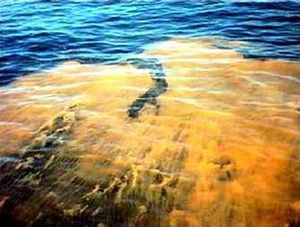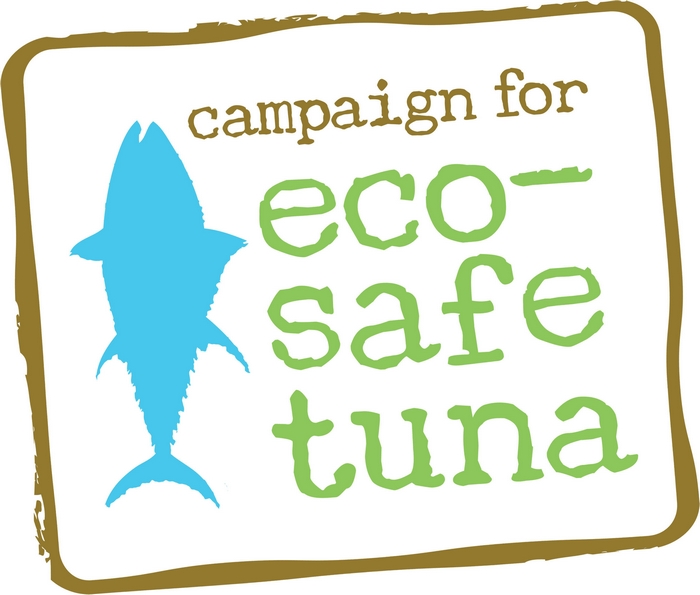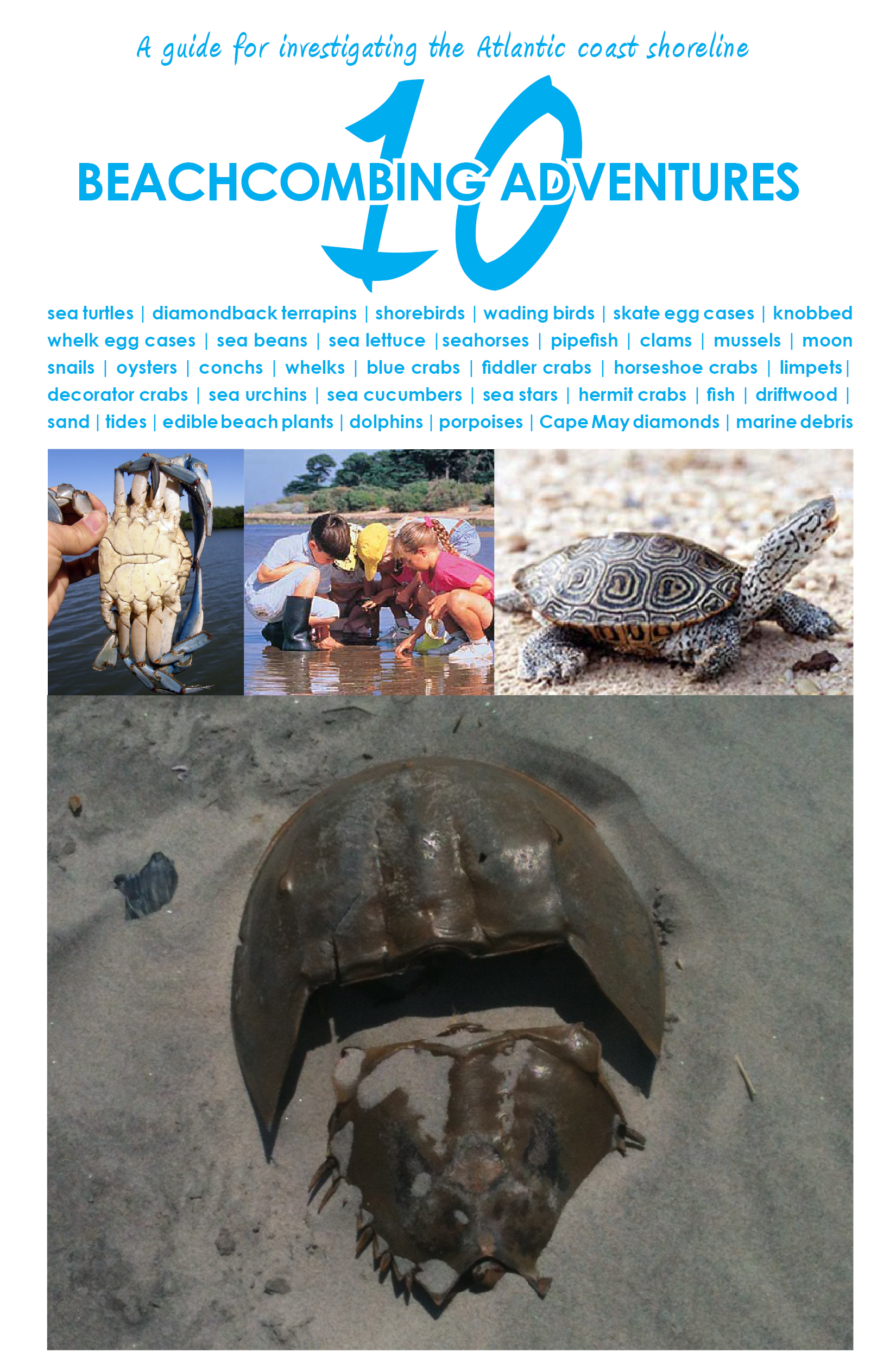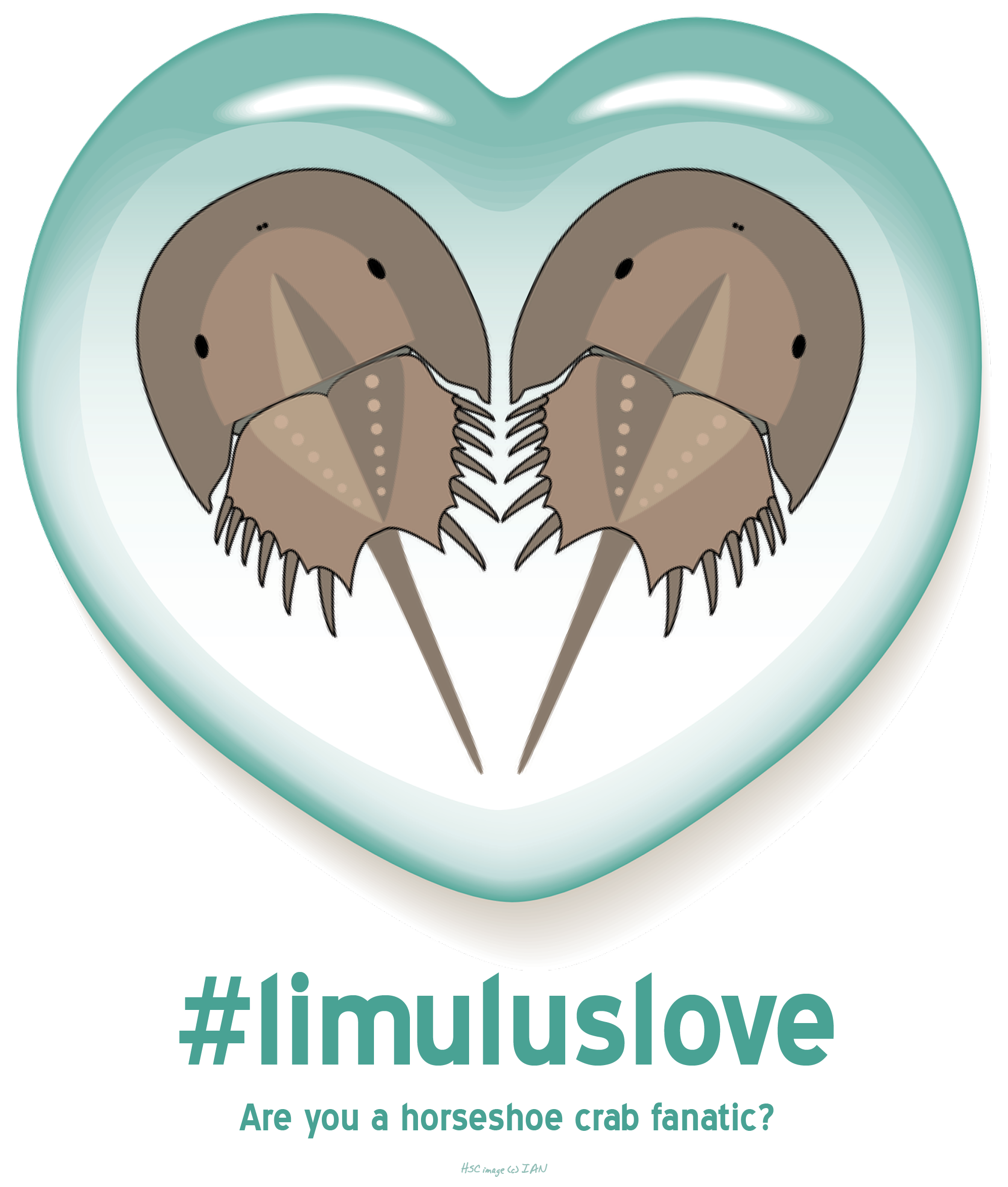The world’s fastest fish is the Indo-Pacific sailfish, Istiophorus platypterus. This sport fish can swim up to 68 miles per hour by standards (a cheetah can run up to 70 miles per hour). Check out this incredible video from PBS which aired in August of 2010. Marine biologist, Rick Rosenthal, witnesses a rare moment of a sailfish feeding at night. You’ll also see a baby sailfish drawn into the light by Rick’s flashlight. Enjoy!
National Hagfish Day is October 20th
You may not know it, but, tomorrow is National Hagfish Day. The day was created to draw attention and appreciation of all marine animals and plants. So please do not forget to appreciate not only the charismatic bottlenose dolphin, but, also the not-so-charismatic hagfish, sea cucumbers and horseshoe crabs.
Here is a little bit of background information on the hagfish.
 The hagfish was thought to be a jawless lamprey when first discovered in Norway in 1747. This cartilaginous fish has no jaw, scales or fins and lives in temperate regions in the southern and northern hemispheres. When a hagfish is born it is born with both female and male reproductive organs. They often change from male to female by seasons. The over 70 species belong to the family “Myxinidae”. The prefix myxi- means slime and relates to the animals ability to produce a slime as a form of defense.
The hagfish was thought to be a jawless lamprey when first discovered in Norway in 1747. This cartilaginous fish has no jaw, scales or fins and lives in temperate regions in the southern and northern hemispheres. When a hagfish is born it is born with both female and male reproductive organs. They often change from male to female by seasons. The over 70 species belong to the family “Myxinidae”. The prefix myxi- means slime and relates to the animals ability to produce a slime as a form of defense.
Another interesting fact is that the hagfish is practically blind as it has its eyes located under its slimy skin.
What is the mystery of the chambered nautilus?
“Year after year beheld the silent toil
That spread his lustrous coil;
Still, as the spiral grew,
He left the past year’s dwelling for the new,
Stole with soft step its shining archway through,
Built up its idle door,
Stretched in his last-found home, and knew the old no more.”
Oliver Wendell Holmes (1804-1894)
The above is only an excerpt from the poem, “The Chambered Nautilus” by Holmes published in 1858. It only begins to hint at the marvel of this magnificent cephalopod. The chambered nautilus has become breathtaking subject matter for generations of artists and has become a commodity on the commercial trade industry.
The chambered nautilus is a squid that lives inside a shell marked with a brown and white zebra pattern. As the squid grows, the shell grows with it and creates compartments which are used as gas chambers and help the cephalopod rise or sink in the water column. The inside of the shell is lined with an iridescent pearl. In the last chamber of the shell are almost 90 tentacles and large eye peering out. Predators of the chambered nautilus include sharks, turtles, and octopus.
What makes the chambered nautilus so mysterious and sought after? Is it the mother of pearl that lines the inside of the animal’s shell? Is it that the animal represents a far off species only found tropical Indo-Pacific? Or is it that the inside compartments of the chambered nautilus each mirror its smaller and larger part exactly and therefore the animal is an example of the golden rectangle found in nature.
This harmonic progression is an illustration of Fibonacci’s sequence. This is a sequence where the first two numbers in the series are added to create the third number for a series of number that begins 0, 1, 1, 2, 3, 5, 8, 13, 21, 34 and so on forever. This proportional pattern can be seen all over in nature: flower petals, pine cones, and even galaxies. Below is an illustration of the proportion as it relates to the chambered nautilus.
Image (c) top – seasky.org, bottom – http://2muchfun.info
Do you have another interesting question? E-mail info@beachchairscientist.com and let us know what you always ponder while digging your toes in the sand!
Whales don’t have scales
That’s right. Whales are covered in blubber because they are mammals like you and I. Now the fish in the sea are another story. You might not realize it, but, if you’ve ever had the opportunity to touch a shark they are covered in scales just like other bony fish. There are several main types of scales that cover fish. See if you can figure out which cover sharks.
1.) Ctenoid scales: These scales are comb-like with the ends having small teeth-like structures.
2.) Ganoid scales: These scales are heavy and diamond-shaped.
3.) Cycloid scales: These are round scales with smooth edges.
4.) Cosmoid scales: These scales are very hard and covered in enamel.
5.) Placoid scales: These scales have teeth-like edges. They are different than ctenoid scales because they lack they rounded front.
Scales grow out of the skin and have modified to quite a few different versions over the years. In fact, the feathers of a bird are a type of evolved scale!
12 good non-fiction books about fish
- Four Fish: The Future of the Last Wild Food by Paul Greenburg
 (read a review here.)
(read a review here.) - Cod: A Biography of the Fish That Changed the World by Mark Kurlansky
- On the Run: An Angler’s Journey Down the Striper Coast by David Dibendetto
- Giant Bluefin by Douglas Whynott
- The Last Fish Tale: The Fate of the Atlantic and Survival in Gloucester, America’s Oldest Fishing Port and Most Original Town by Mark Kurlansky
- The Unnatural History of the Sea by Callum Roberts
- Tuna: A Love Story by Robert Ellis
- The Most Important Fish in the Sea: Menhaden and America: H. Bruce Franklin
- The End of the Line: How Overfishing Is Changing the World and What We Eat by Charles Clover
- The Empty Ocean by Richard Ellis
- 5 Easy Pieces: The Impact of Fisheries on Marine Ecosystems by Daniel Pauly
- Striper Wars: An American Fish Story by Dick Russell
Beach Chair Scientist also has list of great movies, fiction books and blogs about the sea!
Image (c) Island Press.
What is bioluminescence?
Bioluminescence means light (as in ‘illuminate‘) from life (prefix ‘bio‘).
It is produced by a chemical reaction in many marine or terrestrial organisms. The reaction begins with a chemical called luciferase that catalyzes another chemical, luciferin, to then make oxyluciferin and light.
If you see bioluminescence from a boat it is most often tiny dinoflagellates near the surface of the water that begin this chemical reaction once they’re excited. A boat or a passing porpoise can trigger this excitement. On land we are familiar with bioluminescence in fireflies and a glowing fungus, called foxfire.
But, did you know bioluminescence is responsible for illuminating the majority of our habitable world? That’s right, the deep sea is the largest area of habitable space on our planet. A large number of species that utilize this adaptation live in that environment. Here are some images of the inhabitants of the deep sea that use bioluminescence:
 Deep sea shrimp, Acanthephyra purpurea
Deep sea shrimp, Acanthephyra purpurea
 Deep sea fish, Photostomias guernei
Deep sea fish, Photostomias guernei
 Blackdevil angler fish, Melanocetus johnsonii
Blackdevil angler fish, Melanocetus johnsonii
All images (c) NOAA.
The “Osprey”, they’re bone breakers alright
The Latin name for osprey, Pandion haliaetus, means “bone breaker” and explains quite well how the bird of prey gets his main source of food, fish. Ospreys plummet down from almost 30 stories above water and use their barbed talons to grab onto mullet, menhaden, or other fish found in estuaries. These barbs can be thought of as backwards facing scales that allow them to be very precise in clutching their food source.
Image (c) grit.com
Can you tell what type of whale is under the surface by the spray it produces above the surface?
Yes. For instance, the sperm whale will blow forward and to the left. The vapor will be about 6 feet tall. Right whales and bowhead whales will have a v-shaped blow. The right whales will be about 15 feet tall while the bowhead whales will be higher at 21 feet tall. Humpback whales have a low and wide spray. It may reach up to 9 feet. Lastly, the mighty blue whale has the strongest and most distinct spray shooting straight up to almost 21 feet tall.
What is red tide?
About six years ago I went to a wedding on the Gulf of Mexico which was extraordinary except for the occurrence of red tide. Don’t get me wrong, the guests and bride and groom all had a fabulous time despite the red tide. How did it affect us? We were not permitted to swim in the ocean and made the best out of it by playing run the bases on the beach. We could only do this for a little while since it actually affected our breathing and so we took a lot of breaks for margaritas.
It got me wondering what is a red tide? From my research it seems that red tides are not always red and have nothing to do with tides. Scientists are trying to wash away the term red tide and use the term harmful algae bloom (HAB) which explains a bit better about what happens during these occurrences. During a HAB on the Gulf of Mexico there is a high concentration of microscopic marine algae known as Karenia brevis. This is not the only algal culprit to an HAB, but, it is the most frequent. In the Gulf of Mexico the algae Alexandrium fundyense has been known to cause serious damage to local fisheries. In low concentrations these algae is not harmful. But, with high concentrations fish suffocate after it paralyzes their central nervous system. Also, many shellfish that filter water can accumulate the toxins and become inedible to eat.
How harmful algal blooms occur is still under debate. It can be a natural or man-made occurrence.
Do you have another great question? Email info@beachchairscientist.com and let me know what you always ponder while digging your toes in the sand!
Reference Squid
I would love to share this wonderful squid dissection video from Paul Dewiler, Instructor of Marine Science at the San Diego Mesa College. The video was inspired by his overview during his Ultimate Squid Dissection workshop at the National Marine Educators Associations 2010 conference in Gaitlinburg, TN. He states that the purpose of the video is to, “illustrate the squid’s external and internal anatomical structures so that teachers are confident and able to lead and assist their students in dissecting this species in the classroom”. As someone that has struggled with and watched other struggle with the dissection of a squid I am excited to share this wonderful resource. Thank you, Paul!











What people are saying …